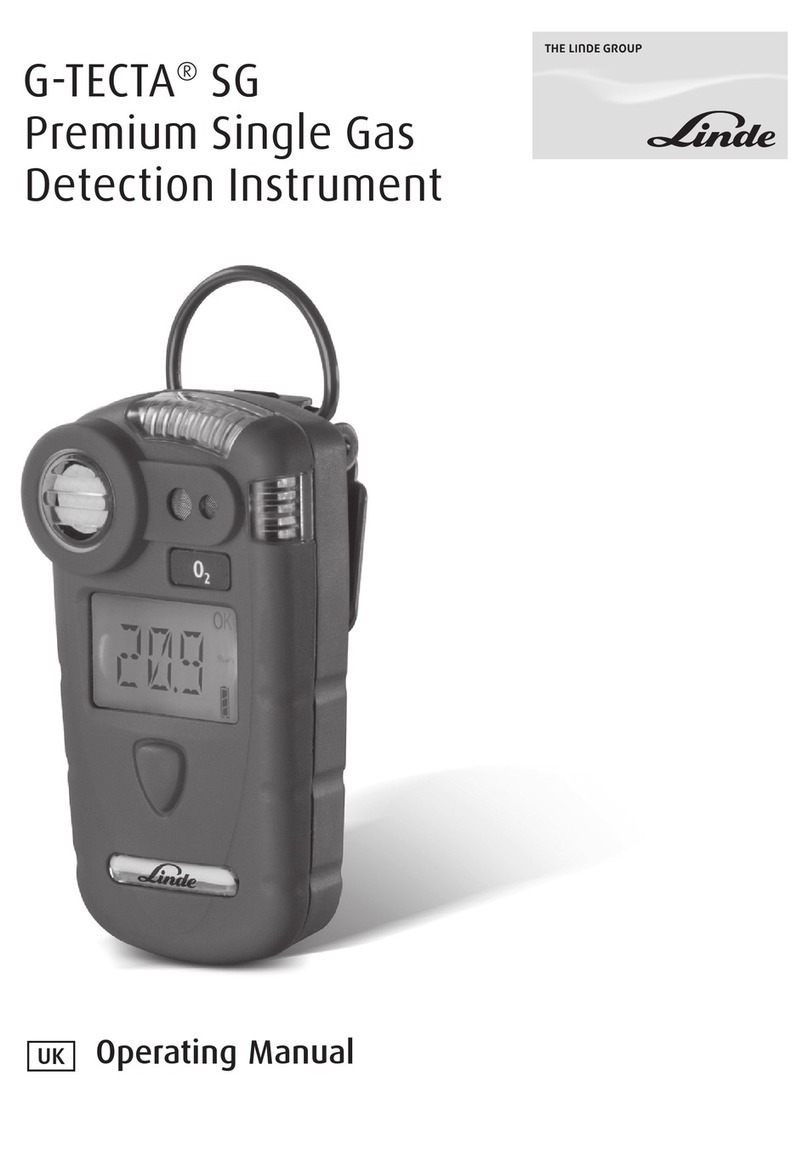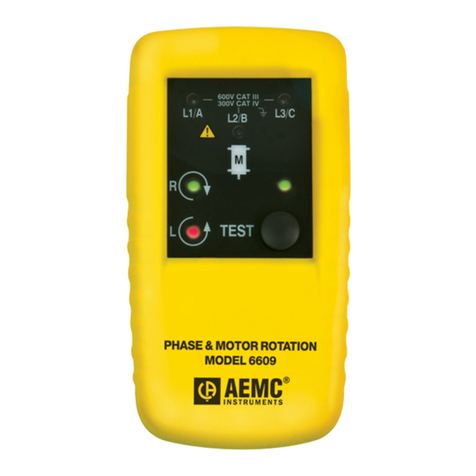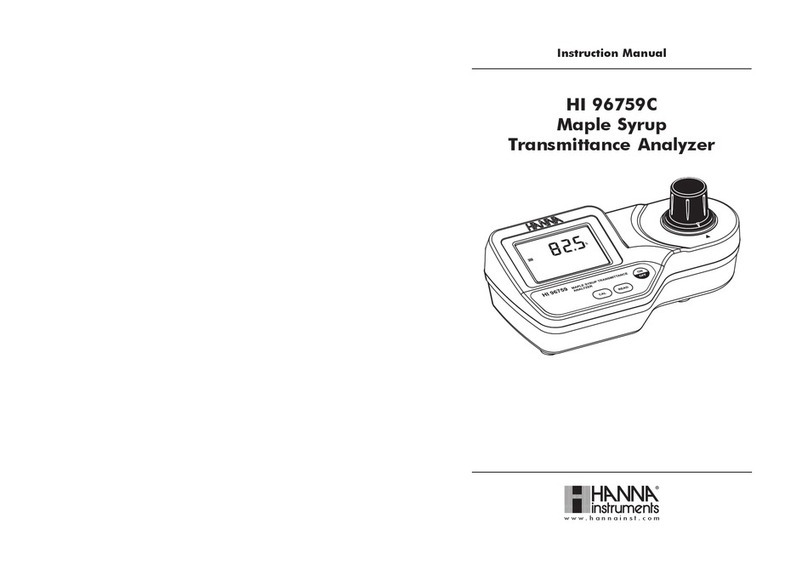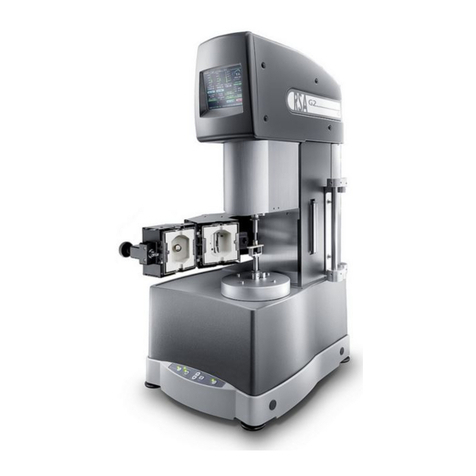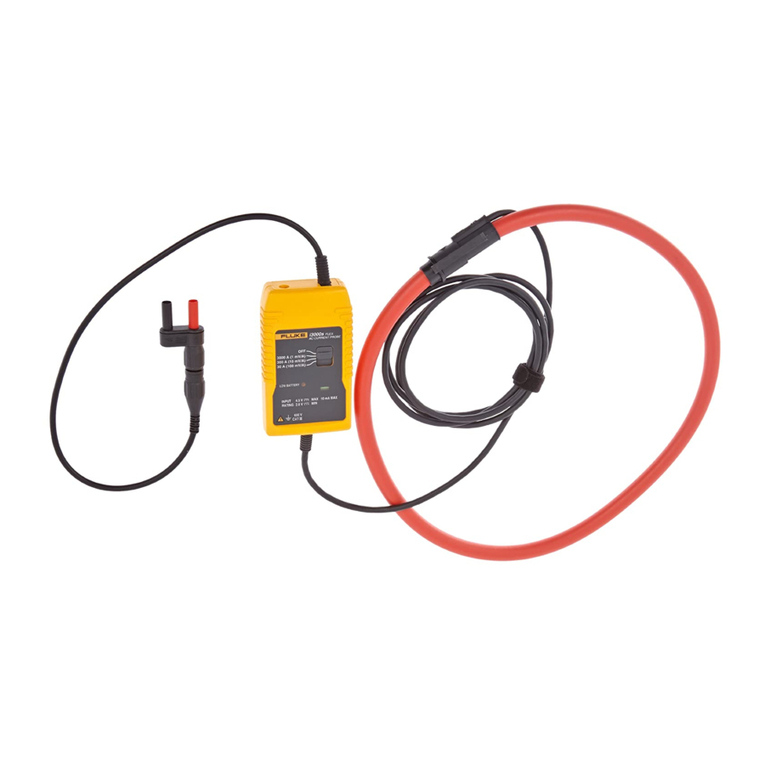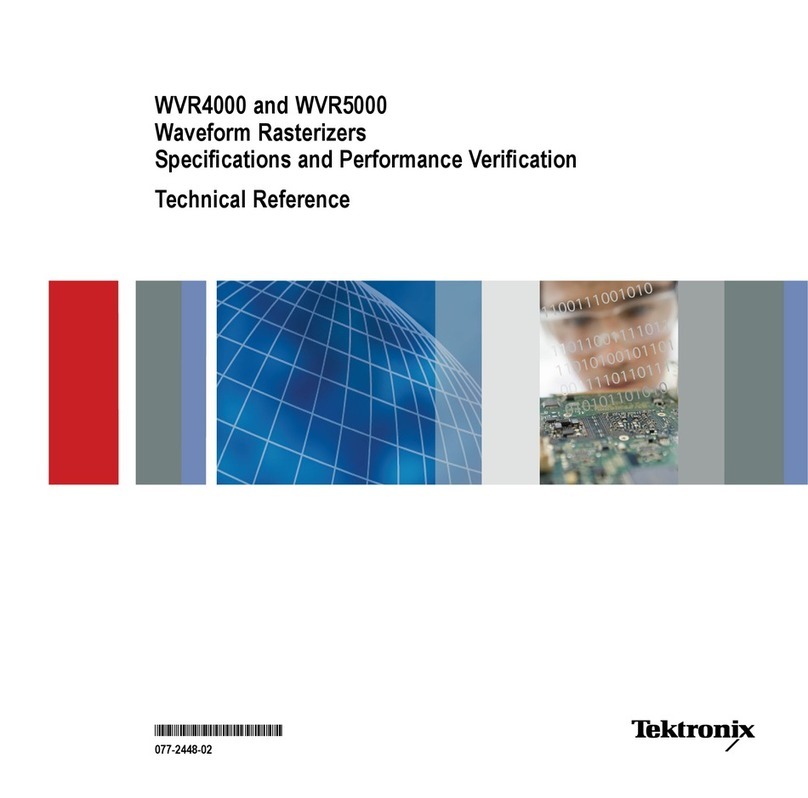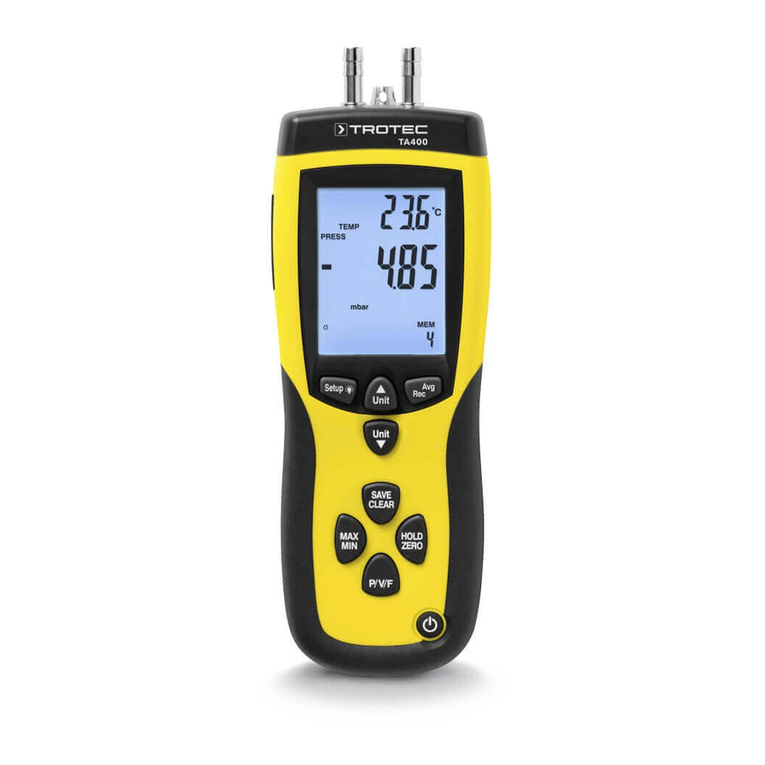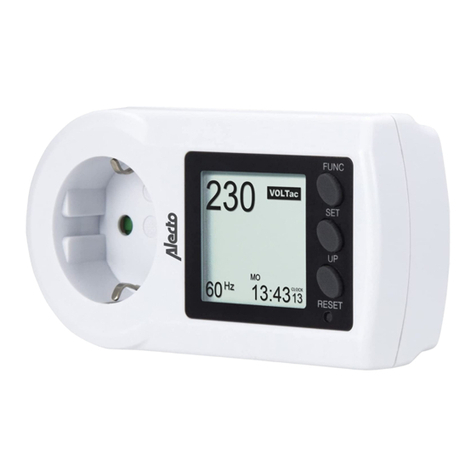Lippmann Geophysikalische Messgeräte 4point light User manual

4point light 10W
Earth resistivity meter
Operating instructions Software Version 4.58
G
M
LLippmann
Geophysikalische Messgeräte
VES
Monitoring
Tomography
Remote
Mapping

Contact
Erich Lippmann - Geophysical Instruments
Kornacker 4 ▪D-94571 Schaufling ▪Germany
Phone +49 (0)9904 –84 076 ▪Skype erich.lippmann
www.l-gm.de ▪lippmann@l-gm.de
Copyright
©Erich Lippmann –Geophysical Instruments, Schaufling 2014
Reprint in whole or in part only allowed with the written approval of Erich Lippmann.

Operating instructions 4point light 10W (V 4.58) Page 3 of 130
Content
1Important information............................................................................ 7
1.1 Manufacturer .................................................................................................7
1.2 Guarantee ......................................................................................................7
1.3 Notes of presentation...................................................................................7
1.3.1 Notation and Symbols................................................................................ 7
1.3.2 Guidance notes.......................................................................................... 7
1.3.3 Instructions................................................................................................. 8
1.3.4 Warnings.................................................................................................... 8
2Safety...................................................................................................... 9
2.1 Safety and warning instructions .................................................................9
2.2 Intended use................................................................................................12
2.3 Unintended use...........................................................................................13
2.4 Disclaimer....................................................................................................13
3Maintenance and disposal....................................................................14
3.1 Maintain the instrument .............................................................................14
3.2 Dispose the instrument..............................................................................14
4Measurement principle and features ...................................................15
4.1 Possible measurement setups..................................................................15
4.2 Constant output current.............................................................................16
4.3 Variable transmitter frequencies...............................................................16
4.4 Specific noise suppression .......................................................................17
4.5 Induced polarization...................................................................................18
5Description of the instrument ..............................................................19
6Commissioning.....................................................................................20
6.1 Power supply...............................................................................................20
6.2 Automatic charging ....................................................................................21
6.3 Operating modes ........................................................................................21

Page 4 of 130 Operating instructions 4point light 10W (V 4.58)
6.4 Calibration ...................................................................................................22
6.5 Connection to the PC .................................................................................23
6.5.1 Data transfer to the PC ............................................................................ 23
6.5.2 Data transfer to the instrument ................................................................ 23
6.6 Connection to the FTP server....................................................................23
6.7 Avoiding mistakes ......................................................................................24
7Operation...............................................................................................25
7.1 Switch on the instrument...........................................................................25
7.2 Switch off the instrument...........................................................................26
7.3 Use of keypad..............................................................................................26
8Menu navigation....................................................................................28
8.1 Main menu ...................................................................................................28
8.2 VES mode ....................................................................................................29
8.2.1 Measurement –Schlumberger mode ...................................................... 30
8.2.2 Measurement parameters for additional geometries............................... 34
8.2.3 Automatic mode....................................................................................... 35
8.2.4 Output ...................................................................................................... 36
8.3 Mapping mode.............................................................................................38
8.3.1 Standard mapping.................................................................................... 40
8.3.2 Multimapping............................................................................................ 49
8.3.3 Automatic mode....................................................................................... 56
8.4 Remote mode ..............................................................................................58
8.4.1 Sending commands to the instrument..................................................... 59
8.4.2 Sending commands to the electrodes ..................................................... 60
8.4.3 Possible error messages ......................................................................... 61
8.5 Tomography mode......................................................................................63
8.5.1 Load......................................................................................................... 64
8.5.2 Show........................................................................................................ 65
8.5.3 Delete....................................................................................................... 66

Operating instructions 4point light 10W (V 4.58) Page 5 of 130
8.5.4 Run........................................................................................................... 67
8.5.5 Continue................................................................................................... 69
8.5.6 Output ...................................................................................................... 70
8.5.7 Remote..................................................................................................... 70
8.6 Monitoring mode.........................................................................................71
8.6.1 Load......................................................................................................... 72
8.6.2 Edit........................................................................................................... 73
8.6.3 Delete....................................................................................................... 74
8.6.4 New.......................................................................................................... 75
8.6.5 Run/RunGPRS......................................................................................... 77
8.6.6 Continue/ContinueGPRS......................................................................... 80
8.6.7 Output ...................................................................................................... 81
8.6.8 GPRS....................................................................................................... 82
8.7 Contact.........................................................................................................84
8.8 SP .................................................................................................................85
8.9 Delete ...........................................................................................................86
8.10 Settings........................................................................................................87
8.10.1 Device...................................................................................................... 88
8.10.2 Communication........................................................................................ 91
8.10.3 Service..................................................................................................... 94
8.10.4 Acquisition................................................................................................ 94
8.10.5 Save......................................................................................................... 97
8.10.6 Load......................................................................................................... 97
8.11 Misc..............................................................................................................98
8.11.1 Provider.................................................................................................... 99
8.11.2 Calibration.............................................................................................. 100
9Troubleshooting..................................................................................108
9.1 General error messages...........................................................................108
9.2 Error messages in remote mode.............................................................108

Page 6 of 130 Operating instructions 4point light 10W (V 4.58)
10 Appendix..............................................................................................109
10.1 Mathematics ..............................................................................................109
10.1.1 Electrode configuration.......................................................................... 109
10.1.2 Phase definition ..................................................................................... 109
10.1.3 Voltage correction.................................................................................. 109
10.1.4 Error definition........................................................................................ 110
10.2 Data formats..............................................................................................111
10.2.1 VES........................................................................................................ 111
10.2.2 Mapping ................................................................................................. 111
10.2.3 Multimapping.......................................................................................... 112
10.2.4 Tomography........................................................................................... 114
10.2.5 Monitoring .............................................................................................. 116
10.3 Monitoring GPRS –error numbers .........................................................121
10.4 Installing new software ............................................................................124
10.5 Working with HTerm.................................................................................125
11 Technical data.....................................................................................127
12 Index ....................................................................................................129

Important information
Operating instructions 4point light 10W (V 4.58) Page 7 of 130
G
M
L
1 Important information
1.1 Manufacturer
Erich Lippmann –Geophysical instruments
Kornacker 4
D-94571 Schaufling
Germany
Phone: +49 (0)9904 –84 076
Skype: erich.lippmann
1.2 Guarantee
Please contact the manufacturer for more information about general terms and conditions
and the warranty period of the instrument.
1.3 Notes of presentation
1.3.1 Notation and Symbols
Notation/Symbol
Function
[xyz]
Keys of the instrument
„xyz“
Shown on the display
(Ω*m)
Physical units
▪
List
➔ xyz
Link
Useful hints, background information
Warning of data loss
Tab. 1.1: Notations and symbols used
1.3.2 Guidance notes
The following guidance notes allow fast access to the requested information:
▪Contents
▪Register
▪Index
The register directly leads from the front page to the individual measurement modes.

Important information
Page 8 of 130 Operating instructions 4point light 10W (V 4.58)
1.3.3 Instructions
Instructions which have to be done in a particular order are numbered. For example:
1. Select „Run“ in the main menu using [] and []
2. Confirm input with [RET]
Instructions which have not to be done in a particular order are tagged with →.
1.3.4 Warnings
Warnings which refer to risks of personal injury or material damage looks like this:
WARNING
Warning which refer to risks of personal injury that may lead to severe injury or death
CAUTION
Warning which refer to risks of personal injury that may lead to minor or
moderate injury
! NOTICE
Warning of potential material damage
Warning of data loss

Safety
Operating instructions 4point light 10W (V 4.58) Page 9 of 130
G
M
L
2 Safety
The earth resistivity meter 4point light 10W is allowed to be put into operation only if the
following operating instructions are read carefully and if the safety instructions are
observed.
→This instrument may be operated by suitably qualified personnel only.
→Read this instructions carefully before putting the earth resistivity meter
4point light 10W into operation.
→Familiarize with the operation and the handling of the instrument before using it.
→Make sure to keep this manual well in reach.
2.1 Safety and warning instructions
To ensure safe instrument operation, it is essential to observe the following safety
instructions.
WARNING
Voltage at the electrodes
Electrodes are under power during the measurement. Touching the electrodes
during the measurement can cause electrical shock.
→Before starting the measurement, make sure that no person is close to
the electrodes anymore.
→Do not touch the electrodes while the instrument is working.
→Make sure that the instrument is not working before touching or
relocating the electrodes.
WARNING
Live parts
After opening the instrument live parts may be exposed. Even terminals may conduct
voltages. Touching may result in an electric shock.
→Disconnect the instrument from the power supply before opening the
housing.
→Only a qualified electrical skilled person is allowed to open the housing
of the instrument under voltage.

Safety
Page 10 of 130 Operating instructions 4point light 10W (V 4.58)
WARNING
Risk of fire
Charging voltages >15 volts may destroy the instrument and in the worst case can
cause fire.
→Always use charging voltages below 15 volts
CAUTION
Extreme working environment
At temperatures below 0 °C (32 °F) or above 50 °C (122 °F) as well as at humidity
levels below 85 % function and operational safety of the instrument may be impaired.
→In case of operating the instrument under extreme climatic conditions,
please contact the manufacturer
CAUTION
Damage to the instrument
In case of visible damages to the instrument, e. g. after long storage or after storage
under difficult climatic conditions, safe operation is no longer ensured.
→Set the instrument out of operation
→Mark the instrument as defective
→Send the instrument back to the manufacturer for maintenance and
repair

Safety
Operating instructions 4point light 10W (V 4.58) Page 11 of 130
G
M
L
! NOTICE
Reverse polarity at the battery terminals
If batteries are inserted with wrong polarity, the instrument may be damaged. There is
no protection against reverse polarity at the battery terminals.
→Always insert the batteries with correct polarity
! NOTICE
Overheating of alkaline cells
Trying to reload alkaline cells may lead to overheating and to the destruction of the
instrument. Alkaline cells may explode.
→When alkaline cells are inserted, never connect an external power
supply to the instrument
→Switch off automatic charging
! NOTICE
Condensation
Condensation due to fog or a change of the environment from warm to cold can
significantly disturb the function of the instrument.
→Before starting the measurement wait several minutes until the
instrument reached the ambient temperature
→Do not perform measurements under condensing conditions (fog)

Safety
Page 12 of 130 Operating instructions 4point light 10W (V 4.58)
! NOTICE
Noise signals
Any type of noise at the measurement frequency will interfere with the measurement.
Acquired data may not be evaluable.
→Exclude mains interferences
→Avoid magnetic interferences
→Avoid measurements in case of wind or rain
→Ensure mechanical stability of the electrodes
! NOTICE
Noise signals at 10 Hz measurement frequency
In Europe or other countries with 50 Hz mains frequency measurements at 10 Hz
result in strong mains interferences. Mains interferences disturb the measurement
→Never use 10 Hz in Europe or in any other countries with 50 Hz
mains frequency.
2.2 Intended use
The earth resistivity meter 4point light 10W is a high precision instrument for
determination of soil resistivity. The electrical resistivity allows determination of the water
content in the soil and of the types of soils and rock.
Applications are:
▪Groundwater prospecting
▪Mining
▪Environmental investigations
▪Lab measurements
▪Measurement of Induced Polarization (IP)
▪Sounding and mapping of archaeological sites
The instrument may not be changed or modified. Please observe the safety instructions!

Safety
Operating instructions 4point light 10W (V 4.58) Page 13 of 130
G
M
L
2.3 Unintended use
▪The instrument 4point light 10W is not provided for conductivity measurements on
living organisms. In the worst case, this might lead to the death of the animal. .
▪Conductivity measurements on electrochemical cells may destroy the instrument.
▪The Instrument is not intended for measurements in potentially explosive
environments, e. g. mines and near potentially explosive gas mixtures.
2.4 Disclaimer
The manufacturer will not be liable for any damages or costs arising out of malfunction,
wrong measurements or data loss of the instrument 4point light 10W.
The manufacturer assumes no responsibility for injury or electric shock deriving from
improper handling of the instrument or improper handling of the connected electro

Maintenance and disposal
Page 14 of 130 Operating instructions 4point light 10W (V 4.58)
3 Maintenance and disposal
3.1 Maintain the instrument
! NOTICE
Leakage of batteries
Leaking batteries may damage the instrument irreversibly.
→Remove batteries from the instrument, if it is not in use for longer than
one month
→Remove batteries from the instrument, if it is stored at temperatures
above 70 °C (+158 °F) or below -20 °C (-4 °F)
→Recharge internal batteries periodically, at the latest when the battery voltage
falls below 4.8 volts ➔7.1 Switch on the instrument, page 25
→Calibrate the instrument every two years ➔16.4 Calibration, page 22
→Contact the manufacturer for updates of the device software
➔ 1.1 Manufacturer, page 7
3.2 Dispose the instrument
The device must be disposed of separately from the normal domestic waste.
→Return empty batteries to the designated collection points
→For a proper and environmentally friendly disposal, send the instrument back to
the manufacturer ➔ 1.1 Manufacturer, page 7

Measurement principle and features
Operating instructions 4point light 10W (V 4.58) Page 15 of 130
G
M
L
4 Measurement principle and features
The earth resistivity meter 4point light 10W is a high precision instrument for
determination of soil resistivity. The phase shift between output current and voltage
provides information about the induced polarization (IP). The accuracy of the instrument
is about 0.1 % with a resolution of max. 100 nV.
4.1 Possible measurement setups
The basic measuring system consists of four electrodes (A, B, M and N), a transmitter
and a receiver. Using the electrodes A and B the transmitter applies alternating current
(AC) to the ground. The receiver measures the voltage U between the electrodes M and
N. The earth resistivity meter 4point light 10W is transmitter and receiver at the same
time. The electrodes are connected to the instrument by cables. During the
measurements the position of the current electrodes A and B is changed, the position of
the potential electrodes remains fixed.
From the current I, the voltage U and a geometric configuration factor the specific
electrical resistivity rho (Ω*m) is calculated.
The following four-electrode arrays are possible:
Schlumberger
Wenner
Dipole-Dipole
Pole-Pole
Fig. 4.1: Examples for four-electrode arrays
In geoelectrical tomography not only four but up to 100 electrodes are inserted into the
ground along a given profile. The stainless steel electrodes are equidistantly connected to
each other by a special cable. For each measurement four out of 100 electrodes are
chosen in a previously defined order.
U
MN
~
~I
A
L
U
A BM N
~
~I
A A A
U
AB MN
~
~I
A
L
A
U
A
B
M
N
~
~I
A
Electrode arrays
Geoelectrical
Tomography

Measurement principle and features
Page 16 of 130 Operating instructions 4point light 10W (V 4.58)
Further reading
Knödel K. et al., Geophysik. Handbuch zur Erkundung des Untergrundes von Deponien und
Altlasten. Springer, 1997
Vogelsang D., Geophysik an Altlasten. Leitfaden für Ingenieure, Naturwissenschaftler und
Juristen., Springer, 1993
http://www.geophysik.uni-kiel.de/~sabine/DieErde/Werkzeuge/Geophysik/M4-
Elektrik/3Widerstand/Prinzip-Widerstand.htm, 11.7.2013
4.2 Constant output current
The instrument produces constant output currents, independent of the contact resistance
of the electrodes. This is only possible within the limit of the maximum output voltage of
the instrument which is about 380 V peak-to-peak. Thus an output current of 15 mA will
only be possible if the resistance in the AB-circuit is below 190 V / 0.015 mA or 12 kΩ.
If the set current cannot be kept stable, no measurement is possible and the instrument
will send a warning signal. A reason for this could be a loose connection, for example.
➔9 Troubleshooting, page 108
4.3 Variable transmitter frequencies
The 4point light 10W is an AC instrument. The output current switches from positive to
negative with selectable frequencies between 0.26 to 30 Hz. For applications which do
not require the determination of the frequency effect the use of the following frequencies
is recommended:
Country
Frequency
Europe
4.16 Hz
US
5 Hz
Japan
5 Hz
Tab. 4.1: Recommended measurement frequencies
The recommended frequencies result from the optimum suppression of the mains
frequency and its harmonics. They will be a good compromise between fast data
acquisition and low capacitive/inductive crosstalk between receiver and transmitter
cables.

Measurement principle and features
Operating instructions 4point light 10W (V 4.58) Page 17 of 130
G
M
L
4.4 Specific noise suppression
! NOTICE
Noise signals
Any type of noise at the measurement frequency will interfere with the measurement.
Acquired data may not be evaluable.
→Exclude mains interferences
→Avoid magnetic interferences
→Avoid measurements in case of wind or rain
→Ensure mechanical stability of the electrodes
! NOTICE
Noise signals at 10 Hz measurement frequency
In Europe or other countries with 50 Hz mains frequency measurements at 10 Hz
result in strong mains interferences. Mains interferences disturb the measurement.
→Never use 10 Hz in Europe or in any other countries with 50 Hz
mains frequency.
The receiver of the instrument is highly selective and only records voltages at the set
frequency. However, noise at the measurement frequency will degrade the quality of the
measurement and should be suppressed.
Reasons for noise are:
▪Mains interferences
▪Magnetic interferences
▪Wind
▪Rain
▪Mechanical instability of the electrodes M and N
For better noise suppression, the 4point light 10W records several samples and averages
those values. By calculating the error on the basis of multiple measurements you get a
good indication of the quality of the data.
➔10.1 Mathematics, page 109
In Europe there is an additional interfering frequency of 16 2/3 Hz caused by the train system. It
will be suppressed to a very high degree by using the measurement frequencies 0.26, 0.52, 1.04,
2.08, 4.16 or 8.33 Hz.

Measurement principle and features
Page 18 of 130 Operating instructions 4point light 10W (V 4.58)
4.5 Induced polarization
The receiver not only records the potential difference but also the phase shift between the
output current at AB and the voltage at the MN terminals. This phase shift is displayed as
voltage (U90). It is called the "out-of phase"-voltage and usually is about 2-3 orders of
magnitude below U0 or the "in-phase" voltage. .
The ratio U90/U0 multiplied by 1000 (mrad = 0.0572 degrees) is a direct measure for the
phase shift and thus for the induced polarization (IP) of the soil.
➔10.1 Mathematics, page 109

Description of the
Operating instructions 4point light 10W (V 4.58) Page 19 of 130
G
M
L
5 Description of the instrument
Fig. 5.1: Earth resistivity meter 4point light 10W: Top view (left) and side view (right)
Number
Function
1
Display
2
Serial interface RS232
3
Keypad
4
0 V-connector
5
+12 V-connector
6
A, Connector for electrode A
7
B, Connector for electrode B
8
GND, Connector for GND/ground
9
M, Connector for electrode M
10
N, Connector for electrode N
11
ActEle, Connector for ActEle
Electrode designation: A and B denote the electrode outputs as well as the current electrodes.
M and N denote the electrode inputs as well as the potential electrodes.
4
5
1
2
3
6 7 8 9 10
11

Commissioning
Page 20 of 130 Operating instructions 4point light 10W (V 4.58)
6 Commissioning
6.1 Power supply
! NOTICE
Reverse polarity at the battery terminals
If batteries are inserted with wrong polarity, the instrument may be damaged. There is
no protection against reverse polarity at the battery terminals.
→Always insert the batteries with correct polarity!
! NOTICE
Overheating of alkaline cells
An accidental attempt of reloading alkaline cells may lead to overheating and to the
destruction of the instrument. Alkaline cells may explode.
→If alkaline cells are used, switch off automatic charging
→Before connecting the instrument to an external power supply, remove
all alkaline cells
The instrument is powered in two different ways:
▪by internal rechargeable NiMh-batteries or alkaline cells
▪by external power supply.
By default the instrument is equipped with rechargeable NiMh batteries (4 x 2.8 Ah /
1.2 V). The internal batteries can be exchanged with standard high capacity (>2.500
mAh) NiMh rechargeable batteries, or in emergency cases when no other power supply is
available with AA-alkaline cells.
The external supply should be a voltage source of 10 to 15 V and 1.2 A. As soon as the
instrument is connected to an external power supply, it automatically switches on. The
supply input is proof against wrong polarity.
An automatic charging device is integrated in the instrument. This device allows
recharging the internal batteries by using an external voltage source. For automatic
charging “Quick charge“ must be activated in the device settings.
➔8.10 Settings, page 87
Table of contents
Popular Measuring Instrument manuals by other brands
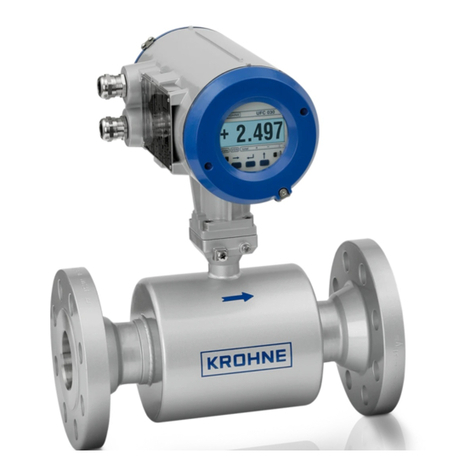
KROHNE
KROHNE UFM 3030 K EEx Series Addition to the installation and operating instructions
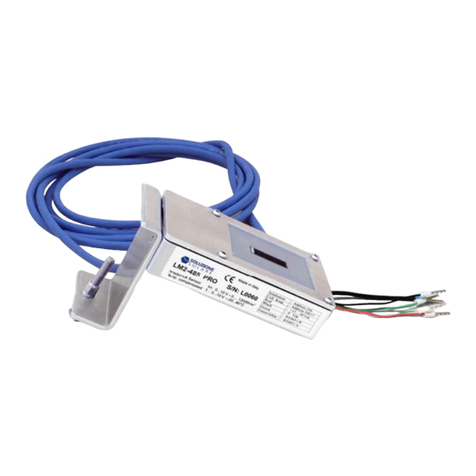
Soluzione Solare
Soluzione Solare Litemeter Pro installation manual

Dr.HD
Dr.HD 1000Combo quick start guide
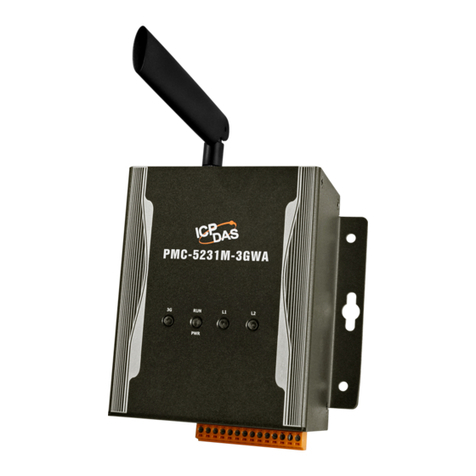
ICP DAS USA
ICP DAS USA PMC series user manual

ThermoFisher Scientific
ThermoFisher Scientific Orion Lab Star PH111 Operation manual
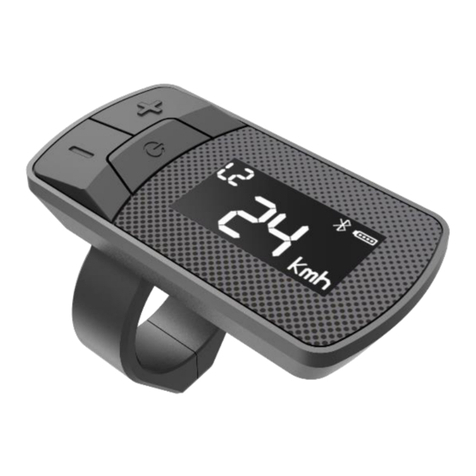
MPS
MPS EDS-C1 user manual

